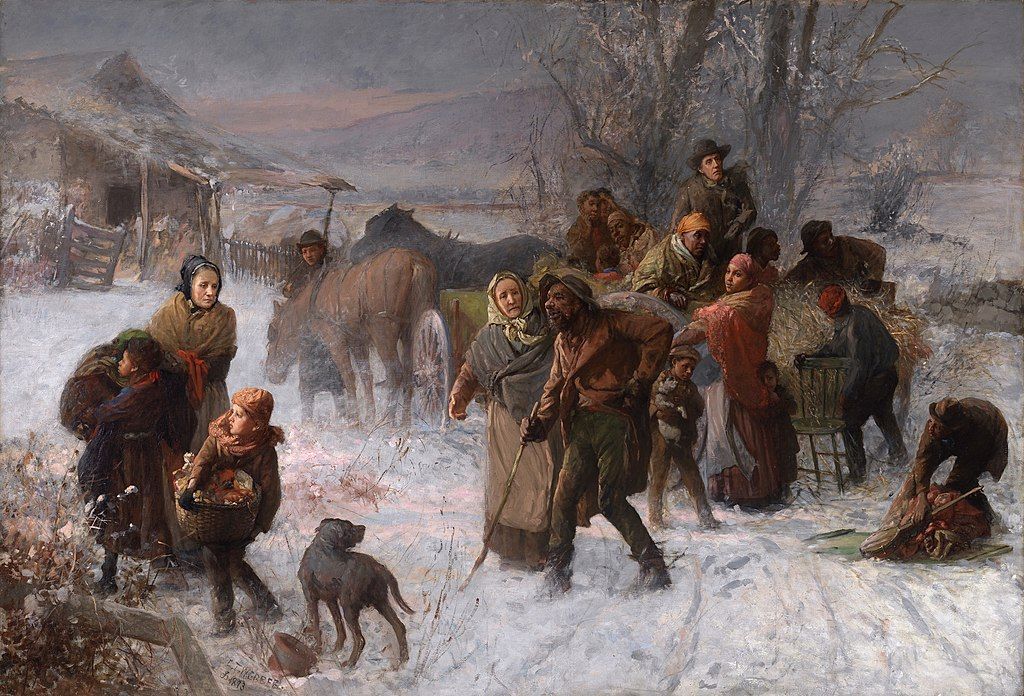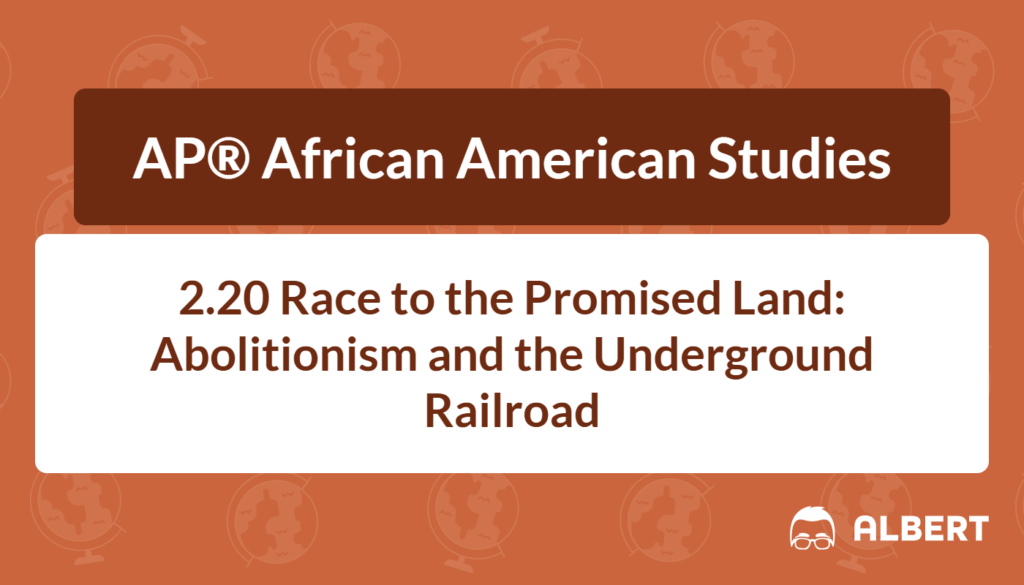What We Review
Race to the Promised Land: Abolitionism and the Underground Railroad
Understanding the struggle for freedom is central to appreciating African American history. The Underground Railroad and the abolitionist movement changed the course of the United States by challenging the institution of slavery. Examining these efforts offers insight into the brave people who fought for liberty and equality. Abolitionism and the Underground Railroad are important for understanding how African Americans paved the way for future civil rights movements. Therefore, exploring this topic helps reveal how determination and collaboration can inspire lasting change.
Understanding Abolitionism
Abolitionism Meaning and Roots
Abolitionism refers to the movement aimed at ending slavery. Abolitionists believed that enslaved people should be freed immediately and that slavery was morally wrong. In the 1700s and early 1800s, this stance was not very popular with many Americans, especially those who benefited from forced labor. However, attitudes slowly shifted as more people, including both Black and white activists, shared stories of cruelty under slavery.
Historical Context
Over time, abolitionists used newspapers, public speeches, and organized groups to spread their message. They formed societies and hosted gatherings to discuss strategies. Many people risked imprisonment, loss of income, or public backlash because they spoke against slavery. Despite these threats, they kept advocating for freedom.
- Some fought slavery by using legal channels, petitioning the government to pass laws.
- Others used direct action, such as helping those escaping slavery.
Key Figures in Abolitionism
Several leaders inspired this movement through their words and actions. One notable figure was Frederick Douglass, an escaped slave who became a powerful orator and writer. He wrote autobiographies explaining the horrors of slavery and called for equality. His speeches brought attention to the daily struggles faced by African Americans, ultimately swaying public opinion toward abolition.
What Was the Underground Railroad?
Definition and Function
The Underground Railroad was neither a real railroad nor a simple route. It was a covert network of Black and white abolitionists who provided transportation, shelter, and other resources to help enslaved people flee the South. According to historical accounts, these freedom-seeking routes extended across the United States North, Canada, and parts of Mexico during the nineteenth century.
Because it was secret, those involved used code words and signals to avoid getting caught. Hiding places were called “stations,” and the people who guided escapees were called “conductors.” These supporters provided food, safe accommodations, and directions to assist those seeking liberty.

Planning an Escape
A typical escape plan often involved:
- Gathering information about possible routes and safe houses.
- Traveling by night to avoid capture, guided by conductors with knowledge of the terrain.
- Using “stations” along the way to rest and receive supplies.
- Continuing until reaching a free state or nearby country.
For instance, an enslaved person might wait for a signal—often a whisper or a coded sign—that the journey would soon begin. After nightfall, the group would move from one secret location to another, relying on supporters’ kindness and bravery.
The Scale of the Underground Railroad
How Many People Found Freedom?
According to historical estimates, about 30,000 African Americans gained their freedom through this network. Despite the large numbers, conducting these escapes was dangerous. The better-known the Underground Railroad became, the more risks participants faced. To curtail the rising tide of escapes, the U.S. Congress passed the Fugitive Slave Acts of 1793 and 1850. The laws allowed local governments to track down and return individuals who escaped enslavement, creating fear for freedom-seekers and protectors alike.
Escaping Despite Greater Risk
The Fugitive Slave Acts gave legal backing to slaveholders, making it even more perilous to hide or help freedom seekers. Nonetheless, the Underground Railroad continued its work. Black and white abolitionists teamed up to help individuals navigate the system’s dangers. Many risked arrest, heavy fines, and even violence. Therefore, joining the Underground Railroad demanded tremendous courage.
A Personal Journey Example
One example is the story of an individual who fled from a plantation under the cover of darkness. A sensitive tip from another enslaved person indicated the best night to leave. A local minister, known for his abolitionist views, discreetly offered support, guiding the escapee to a trusted farmhouse several miles away. From there, another conductor took over, leading the person farther north until reaching a free state. This firsthand account highlights the extensive collaboration and stealth required to evade capture.
Harriet Tubman and Her Significant Contributions
Early Life and Break for Freedom
Harriet Tubman and the Underground Railroad together symbolize hope for many history students. Tubman was born into slavery in Maryland around 1822. She suffered harsh conditions, including physical abuse. Yet her resolve to be free grew strong. Around 1849, she escaped and reached Philadelphia. However, she did not remain idle in her newfound freedom.
Conductor on the Underground Railroad
Tubman decided to return to the South at least 19 times. Each journey came with enormous risk, given the Fugitive Slave Acts. Tubman guided about 80 enslaved individuals to freedom, using an expert understanding of the landscape. She famously sang spirituals like coded messages, letting people know when it was time to flee. Her unwavering commitment made her one of the most famous conductors of the Underground Railroad.
Strategic Role in the Civil War
Tubman’s involvement did not stop once the Civil War began in 1861. She used her knowledge of geography for the Union Army. Serving as a spy and nurse, she leveraged trusted connections with local communities to gather intelligence. During the Combahee River raid in 1863, Tubman even led a military operation to free more enslaved people, making her the first American woman known to command such a mission.
One detailed account from that raid describes how Tubman guided Union boats deep into Confederate territory. She quietly spread word among local enslaved people, urging them to join the rescue. The mission freed more than 700 individuals, demonstrating Tubman’s ability to outsmart dangerous circumstances.
Legacy of the Underground Railroad and Abolitionism
Influence on African American History
The Underground Railroad and abolitionism left a lasting impact on African American history. They undermined the institution of slavery and built a foundation for other civil rights struggles. The perseverance seen in these movements powered the drive to end Jim Crow laws and secure voting rights.
Path to Modern Social Justice
Today, many social justice movements draw both inspiration and lessons from abolitionism. People continue to fight for equality and fairness, just as those early activists did. Their ability to unite around a shared goal reminds observers that grassroot actions and alliances can achieve great change. Modern advocacy for racial equality and civil rights still echoes the spirit of the earliest abolitionist efforts.
Conclusion
Abolitionism and the Underground Railroad represent the relentless pursuit of freedom. These stories demonstrate remarkable courage and cooperation in the face of dangerous laws and social barriers. Harriet Tubman’s leadership stands as a powerful example, proving that even one individual can influence national events. By studying the facts about the Underground Railroad, it is possible to appreciate these pioneers’ sacrifices. Abolitionism’s methods and its success continue to inform modern civil rights advocacy. Exploring these powerful stories encourages deeper reflection on ethical leadership and how to stand up for justice.
Sources
- Harriet Tubman’s reflection in “The Refugee” by Benjamin Drew, 1856 (p. 30)
- This firsthand account offers insight into Tubman’s experiences with both slavery and escape. According to the text, her confidence and commitment are evident, revealing the emotional toll and bravery required to lead others to freedom.
- Excerpt from “Harriet, the Moses of Her People” by Sarah H. Bradford, 1886 (pages 27–29)
- Bradford’s narrative highlights Tubman’s pivotal role as a conductor. It reinforces the details of her strategic use of spiritual songs, her knowledge of secret routes, and her leadership in guiding enslaved people to safe havens. These events illustrate how Tubman served not only as a rescuer but also as a unifying symbol of hope.
These resources connect directly to AP® African American Studies standards. They offer real-life examples of Harriet Tubman’s contributions (LO 2.20.B) and highlight the network’s broad role in helping about 30,000 people reach freedom (LO 2.20.A). The historical context and personal stories emphasize the Underground Railroad’s scale, as well as the extraordinary courage of individuals who risked everything to help others.
Quick Reference Chart
Below is a chart of important vocabulary and concepts:
| Term or Key Feature | Definition or Significance |
| Abolitionism | A movement to end slavery. Abolitionists believed in the immediate freedom of enslaved people. |
| Underground Railroad | A secret network of Black and white abolitionists who helped enslaved people escape to free states, Canada, or Mexico. |
| Fugitive Slave Acts | Laws passed in 1793 and 1850 that allowed authorities to capture and return escaped enslaved people to their enslavers. |
| Harriet Tubman | An escaped enslaved woman who returned to the South multiple times to guide others to freedom. She also served as a spy and nurse for the Union Army and led the Combahee River raid. |
| Conductor | A person who guided freedom seekers along the Underground Railroad, offering directions, supplies, or shelter. |
| Stations | Safe houses or hiding places used in the Underground Railroad network. |
| Frederick Douglass | An escaped enslaved person who became a prominent abolitionist leader, known for his powerful speeches and written works about slavery. |
| Combahee River Raid | A Civil War operation led by Harriet Tubman in 1863, freeing more than 700 enslaved people. |
| Social Justice Movements | Modern groups advocating for equality, inspired by the principles of abolitionism and the courage shown in the Underground Railroad. |
Sharpen Your Skills for AP® African American Studies
Are you preparing for the AP® African American Studies test? We’ve got you covered! Try our review articles designed to help you confidently tackle real-world AP® African American Studies problems. You’ll find everything you need to succeed, from quick tips to detailed strategies. Start exploring now!
Need help preparing for your AP® African American Studies exam?
Albert has hundreds of AP® African American Studies practice questions, free response, and full-length practice tests to try out.









